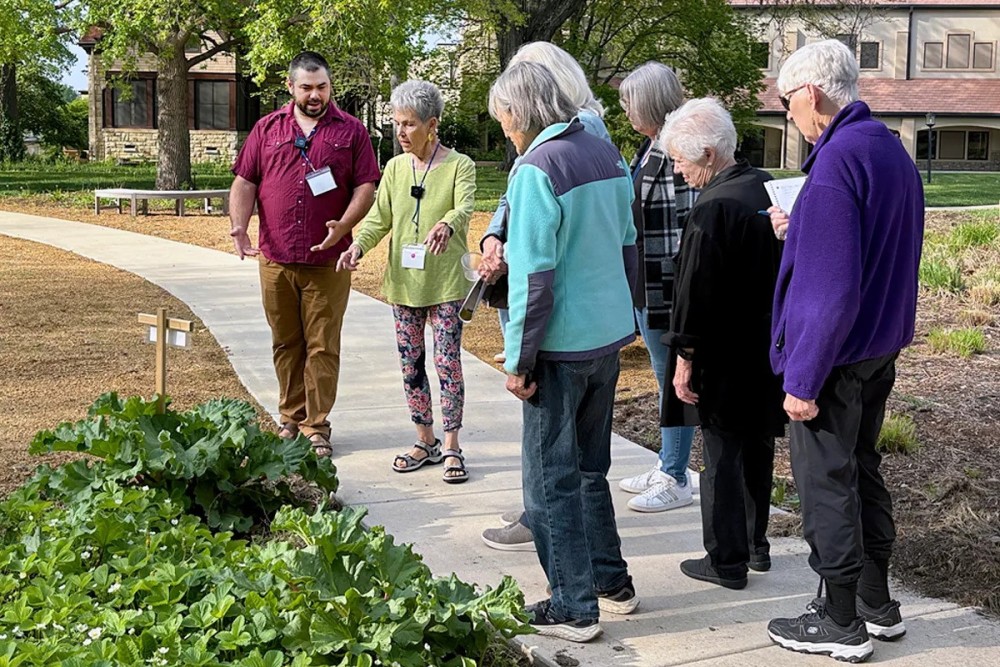Episcopal Church's first eco-region hosts event for people to learn, reflect on environmental issues

Williie Madl, left, and Ann Palmer point out rhubarb and strawberries growing at Bethany House and Gardens in Topeka, Kansas, on April 25 to some of the attendees of the Grasslands Eco-region Network gathering. Madl is groundskeeper for the gardens and Palmer helped design them. (Photo by Melodie Woerman/Episcopal News Service)
A gathering for people interested in creation care issues took place April 25-26 in Topeka, Kansas, and was sponsored by the Episcopal Grasslands Network, the first eco-region created by legislation passed during the 2024 general convention.
The event drew 134 registrants from 35 dioceses across the Episcopal Church, and about half of them attended in person. It also attracted 22 people who indicated they were not Episcopalians, including some who had no religious affiliation.
The Grasslands Network currently includes 12 Episcopal dioceses in the central and western United States—North Dakota, South Dakota, Nebraska, Kansas, Western Kansas, Northwest Texas, Montana, Idaho, Wyoming, Colorado, Rio Grande, and Navajoland.




